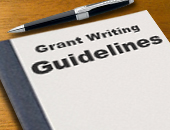 Grant writing requires knowledge and skills. Everything must be written with proper analysis, planning, and organization. The entire process is really complex and tedious. But with the help of set guidelines, a writer is able to do the writing with ease.
Grant writing requires knowledge and skills. Everything must be written with proper analysis, planning, and organization. The entire process is really complex and tedious. But with the help of set guidelines, a writer is able to do the writing with ease.
Grant writing guidelines serve as a database of info and help for fund-seeking groups and people. They provide basic details about the writing process and those that must be included in the written request. They are really a big help in starting the write-up.
Things to Ponder
Planning is the most important part of the process. Grant writing guidelines provide a smart and strategic outline so that everything will go smoothly along the way. Before you start, be clear with your thoughts and goals. Make an outline of these things:
- Problem. Identify the need or problem to address.
- Solution. You must think of a clear solution to the problem. Remember that you must not think that money is the only answer to your needs.
- Goal. Specify your objectives. They must be SMART (sustainable, measurable, attainable, relevant, and time bound). You can include a timeline to give a better idea on your plans.
Other grant writing guidelines are presented in questions, which can often help you focus on the vital points needed to be discussed in a grant request. These include:
- Who will benefit from your proposed project?
- Are your resources enough for the project? How many staff, equipment, and supplies do you have?
- How will you know if the project will going to succeed? How will you assess your program and/or service?
- How big or small is the problem?
- Can you or your group carry out such program?
Sections to Include
There are many sections that you will need to include in a proposal. These include:
Abstract
This section sums up the content of the proposal. It must discuss briefly the background of the group, the need for its proposed project, and the programs that will help resolve the issues being presented. It is best written after the rest of the proposal is done. It often contains 250 to 500 words, about two to three paragraphs, and limited to one page only. Use conventional font styles and 12-size fonts.
Intro
This includes the organization’s background, history, and experience. This part may also contain brief bio of its key members and staff. Further, it shows the organization’s philosophy, core values, and mission and vision statements.
Problem Statement
This section must be clear, concise, and well supported. It must contain the problems or issues that need to be addressed by the group through its programs and services, the social and economic cost, and relevant studies and current stats.
Goals
These must directly tell the plans to solve the problem. Include certain objectives or activities to do to achieve the set goals.
Program Methods and Design
This portion tackles how the project will be implemented with various means and resources. It often contains details about the specifics of the proposed project, such as location, target people, service to offer, publicity schemes, and timeline of activities.
Evaluation Plan
This explains how the project will be measured. It includes plans, methods, and details that will be used to measure success for evaluation purposes.
Budget Plan
The budget plan provides a breakdown of the budget needed and the justification on the importance of such items.
Appendices
These are optional, only if you wish to include other written documents that cannot be included in the body of the request.
Note, however, that some funder’s grant writing guidelines may not require all of these sections. Just be keen in following the set guidelines and you’ll surely never go wrong.
If you can’t make a good written request, seek help from expert grant writers.




